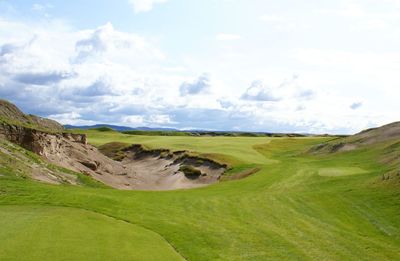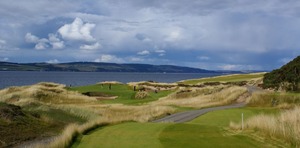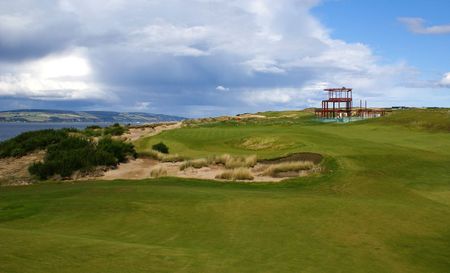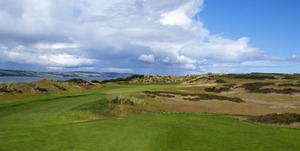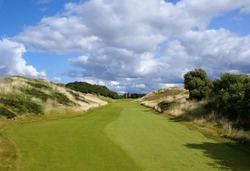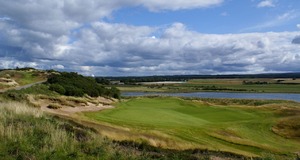When you come to think of it that is the secret of most of the great holes all over the world. They all have some kind of a twist. C.B. MACDONALD
How Natives Should Look
/"A Puritan's Pine Valley"
/Prairie Club Page Update
/ I've updated the Prairie Club page to include new articles from the New York Times on Valentine, the Omaha World-Herald on the project status and Gil Hanse's rendering of our Horse Course. Still to come over the fall and winter are two more videos and my treatise on Horse Golf.
I've updated the Prairie Club page to include new articles from the New York Times on Valentine, the Omaha World-Herald on the project status and Gil Hanse's rendering of our Horse Course. Still to come over the fall and winter are two more videos and my treatise on Horse Golf.
Castle Stuart Images Vol. 1
/With all of this gloom and doom I thought I'd share a few photos sent to me by John Kemp, an aspiring architect who worked on The Prairie Club's Horse Course project with us this summer. John was part of the crew that built Castle Stuart with Gil Hanse, Mark Parsinen and Jim Wagner. He recently played the course on what looked to be a stunning day and captured these shots. I don't know much about the holes, so hopefully John or someone else will chime in.
I believe this is the fourth hole. You know the drill, click on the images to see full screen versions.
“We didn’t want the green to look like it had been dropped from outer space in the backyard of Golf House"
/ Someone named Dave Fanucchi of the USGA, who apparently is part of the "new media" gang brought into restore Far Hills media relations order (but they are waiting to tell the golf media this!), sent this press release regarding Far Hills' new Gil Hanse-constructed putting course.
Someone named Dave Fanucchi of the USGA, who apparently is part of the "new media" gang brought into restore Far Hills media relations order (but they are waiting to tell the golf media this!), sent this press release regarding Far Hills' new Gil Hanse-constructed putting course.
USGA Museum’s The Pynes Putting Course Now Open to the Public
Far Hills, N.J. (Sept. 23, 2008) – The USGA Museum today opened The Pynes Putting Course, a 16,000-square-foot putting green that will allow visitors to test their skills using replicas of antique putters and balls from the late 19th and early 20th centuries.
The Pynes Putting Course will be open to visitors during regular Museum hours from early spring to late fall, weather permitting. The green fee is $5 with paid admission to the Museum and includes a souvenir square-mesh golf ball. Visitors will be able to use replicas of four classic putters ‑‑ such as Bob Jones’ famous Calamity Jane II ‑- to play the nine-hole course, which will be re-routed on a weekly basis.
Named for Evelyn and Percy Pyne, who lived on the grounds of the country estate that is now home to the United States Golf Association, The Pynes Putting Course was inspired by the world-renowned Himalayas putting green in St. Andrews, Scotland. That green, which has served as home to the Ladies’ Putting Club of St. Andrews since 1867, has long welcomed visitors from all over the globe.
“We hope that the experience of playing the putting course will increase visitors’ appreciation for golfers of the past and their skills,” said Rand Jerris, Director of the USGA Museum. “We hope there are some golfers who come and get hooked on the history of the game. It’s a place where families are welcome, and it may be the first time some visitors ever get to putt on a grass green.”
The green was designed by Philadelphia-based architect Gil Hanse, who also spent more than two days on a shaper to fashion the putting surface’s dramatic mounds and swales. USGA Green Section staffers Jim Moore and Dave Oatis oversaw the agronomic details of the green, which utilizes “Declaration,” a creeping bentgrass strain developed at Rutgers University with the assistance of USGA Green Section funding.Now, I don't like to pick on the USGA, but it would be nice if someone had proofread this so that it didn't have Gil Hanse spending two days on a shaper when he was actually on a bulldozer.
Gil also donated his services. Now, I would have advised against this since the USGA has $300 million in reserve (well...before the last few weeks they did). Still, it would have been nice for them to note that. It was also left out of David Shefter's otherwise excellent story on the new green, which also explains the fascinating process of making period putters and balls. There are also photo links there as well with images by John Mummert, including plenty of the construction process.
Querencia
/ Added to the lefthand column is a page devoted to Querencia where I will be helping Gil Hanse add a second course to the Los Cabos, Mexico development. There is an interview with Gil on the club site, a press release and my own site photos with descriptions of the land.
Added to the lefthand column is a page devoted to Querencia where I will be helping Gil Hanse add a second course to the Los Cabos, Mexico development. There is an interview with Gil on the club site, a press release and my own site photos with descriptions of the land. Another Castle Stuart Video
/The previous making of videos for Scotland's Castle Stuart resort are posted here, here, here and here. Volume 5 looks at the heather "chunking" work taking place. That does not sound very interesting, I know, but it's the best one yet, especially in showing how little about this natural looking links style course is shaping up to be quite...natural.Oh, and I have no idea who the fellow is who is talking throughout the video.



